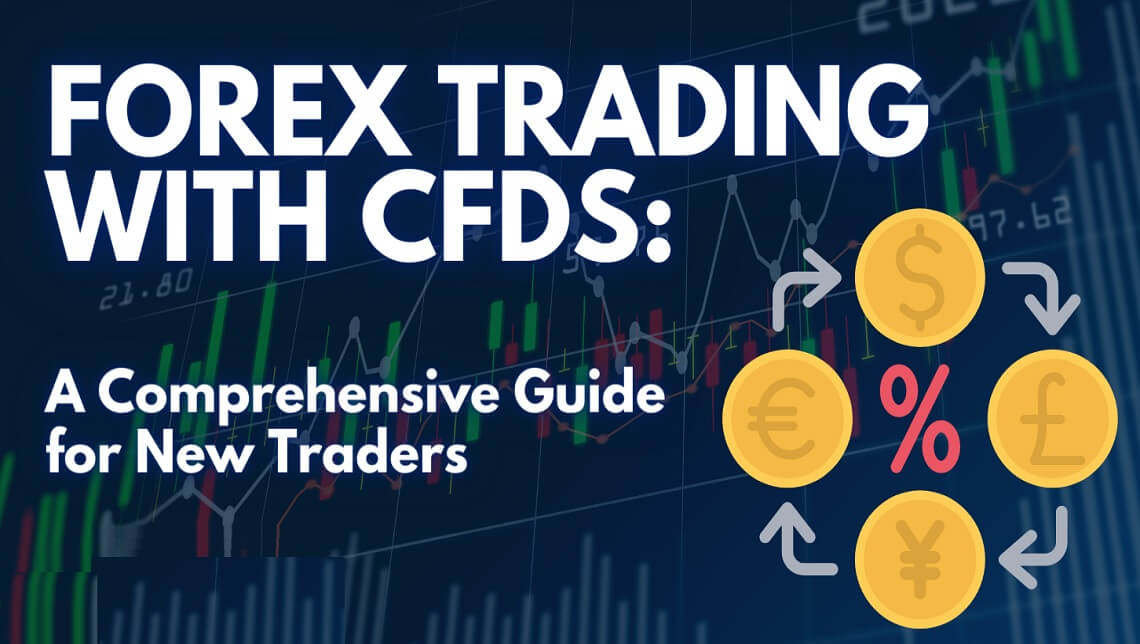Financial trading has had a retail boom in recent years. While much of the boom was fueled by the COVID-19 pandemic, fintech platforms have been growing in stature since the late 2000s. Still, millions of people in advanced economies now consider themselves financial traders.
It is, of course, a lot more sophisticated than buying stocks. Modern traders use a range of financial instruments, most notably CFDs (contracts for difference).
The mechanics of CFD trading are easy enough to learn, and, in truth, there is a lot of jargon in the trading sector that can make it look a little bit more daunting than it is in practice. Yet, just because something is easy to learn, does not mean it is easy to be successful. Below, we will take you through some of the steps to take into account before starting to trade CFDs.
Table of Contents
- 1 Selecting a Reputable CFD Broker
- 2 Opening and Funding Your Trading Account
Selecting a Reputable CFD Broker
Selecting a reputable broker is the first and perhaps most critical step for CFD traders. In a market that has seen a considerable rise in retail investor activity, brokers are competitive. Doing research, including reading reviews is imperative.
Tip: Try a demo account with a broker before you use real money to trade. That way, you can get a feel for trading and the broker’s platform.
Brokers provide access to financial instruments, including forex, stocks, indices, commodities, and emerging markets like cryptocurrencies. The right broker offers these instruments and backs them with comprehensive educational resources, helping traders at all levels enhance their trading skills.
Opening and Funding Your Trading Account
With a broker selected, the next step is funding your trading account. This process is your gateway to the markets, enabling you to start trading in real-time. Each broker offers a range of payment options, but make sure to read the fine print to see what they charge in terms of fees for deposits (if any).
Choosing Your CFD Market
The Australian CFD landscape is diverse, offering traders a range of financial instruments. Each market offers unique opportunities and challenges. This can range from stocks to crypto to forex to commodities, all of which have different types of trading strategies and risk factors.
Thorough market research is imperative to understand which market aligns best with your trading goals and risk appetite. Employing technical and fundamental analysis can provide a robust foundation for making informed decisions.
Developing a Trading Plan
Nearly all experienced traders will tell you that it’s crucial to have a trading plan and budget. Otherwise, you end up with vague goals. Yes, everyone wants to get rich, but you will end up overtrading if you don’t have a plan to take profits. Of course, you should only trade money that you can afford to lose.
The Art of Placing a CFD Trade
With your account set up and a trading plan in hand, the next step is placing a CFD trade. This process involves several decisions:
-
-
- Buy or Sell: Decide whether to take a long (buy) or short (sell) position based on your market analysis.
- Position Size: Determine the size of your trade, considering your risk tolerance and capital.
- Leverage: Leverage is a powerful tool in CFD trading, enabling traders to control large positions with relatively little capital. However, using leverage judiciously and understanding its risks and rewards is crucial.
- Stop and Limit Orders: Implementing stop-loss and take-profit orders is a key risk management strategy, helping to protect your investment from unexpected market movements.
- Monitoring Your Trade: Vigilance is key in CFD trading. Keep a close eye on your positions, ready to make adjustments or exit as market conditions dictate.
-
The Australian CFD Trading Context
In recent years, Australia has seen a significant surge in CFD trading activity, with tens of thousands of retail investors actively participating. This upsurge reflects the country’s strong investment market, characterized by a well-developed infrastructure and a high degree of regulatory oversight.
Understanding the Technical Landscape of CFD Trading
CFD trading is not just about choosing markets and instruments; it’s also about grasping the underlying technical aspects that drive these markets. The good news is that you don’t need a degree in finance to get an education in these. Most online brokers will have plenty of educational resources, and you will be surprised at some of the quality financial content on YouTube and Twitter/X.
The Role of Foreign Exchange in CFD Trading
In the broader context of CFD trading, the role of foreign exchange services is pivotal. As the industry revenue grew at a CAGR of 20.1% over the past five years, reaching an estimated $641.5 million in 2023, it’s clear that foreign exchange services form an integral part of the trading ecosystem.
Risk Management: The Keystone of CFD Trading
Effective risk management is the bedrock of successful CFD trading, especially in a market known for its volatility. Traders need to be adept at various strategies to safeguard their investments:
-
- Stop-Loss Orders: Setting stop-loss orders helps limit potential losses by automatically closing a trade at a predetermined price level.
- Diversified Portfolio: Diversifying across different markets and instruments can reduce the risk associated with any single investment.
- Leverage Management: While leverage can amplify gains, it also increases the potential for significant losses. Understanding and managing leverage is crucial in maintaining a balanced trading approach.
The Closing Bell
The market’s growth, driven by robust engagement in forex trading and the popularity of sophisticated instruments like rate swaps, paints a picture of a dynamic and sophisticated trading environment. Not everyone is successful with CFD trading – far from it. Yet, it can be rewarding for those who put the hard work in. The tools are all available online for free, and, indeed, you can explore other options like copy trading (online brokers will allow you to copy the trades of professionals). But don’t forget that budgeting is important, as even the best traders can lose money on CFDs.


